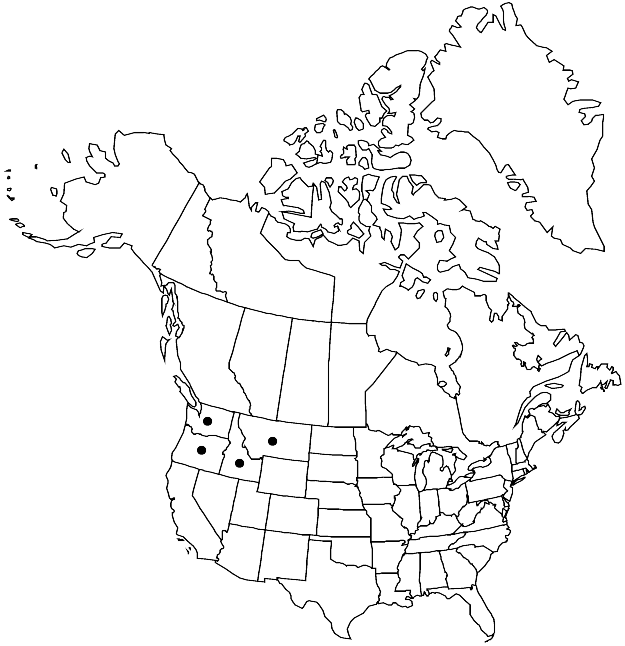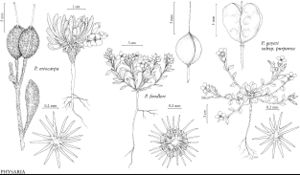Physaria geyeri
Gen. Amer. Bor. 1: 162. 1848.
Perennials; caudex usually simple, (cespitose); (silvery) pubescent throughout, trichomes (sessile), 6–8-rayed, rays mostly furcate, (tuberculate to nearly smooth). Stems several from base, decumbent, (arising laterally, unbranched), 1–3 dm. Basal leaves (numerous); (petiole slender, rarely with a few broad teeth); blade obovate, 3–7 cm, margins entire. Cauline leaves: blade oblanceolate, 1.5–3 cm, margins entire. Racemes loose. Fruiting pedicels (ascending or spreading, slightly curved or sigmoid), 1–2 cm. Flowers: sepals oblong, 5–7 mm; petals (yellow to purplish), spatulate, 8–12 mm. Fruits obcordate, angustiseptate, somewhat inflated, (not bladdery), 5–7 × 6–9 mm, (papery, basal sinus absent, apical sinus broad and open); valves (retaining seeds after dehiscence), loosely pubescent, trichomes spreading; replum ovate, 5–7 mm, as wide as or wider than fruit, apex acute or obtuse; ovules 4–6 per ovary; style 5–7 mm.
Distribution

nw United States.
Discussion
Subspecies 2 (2 in the flora).
Selected References
None.
Key
| 1 | Replum apices acute; ovules 4 per ovary; petals yellow, drying yellow. | Physaria geyeri subsp. geyeri |
| 1 | Replum apices obtuse; ovules usually 6 per ovary; petals purplish or light yellow, drying purplish. | Physaria geyeri subsp. purpurea |
